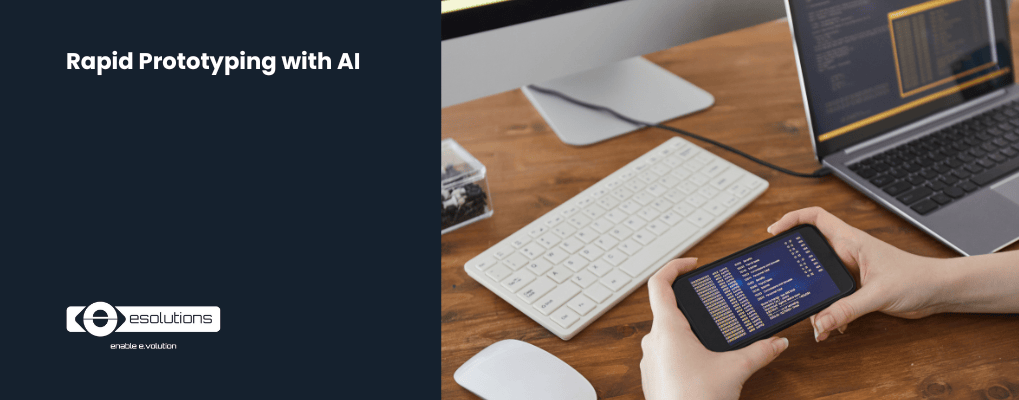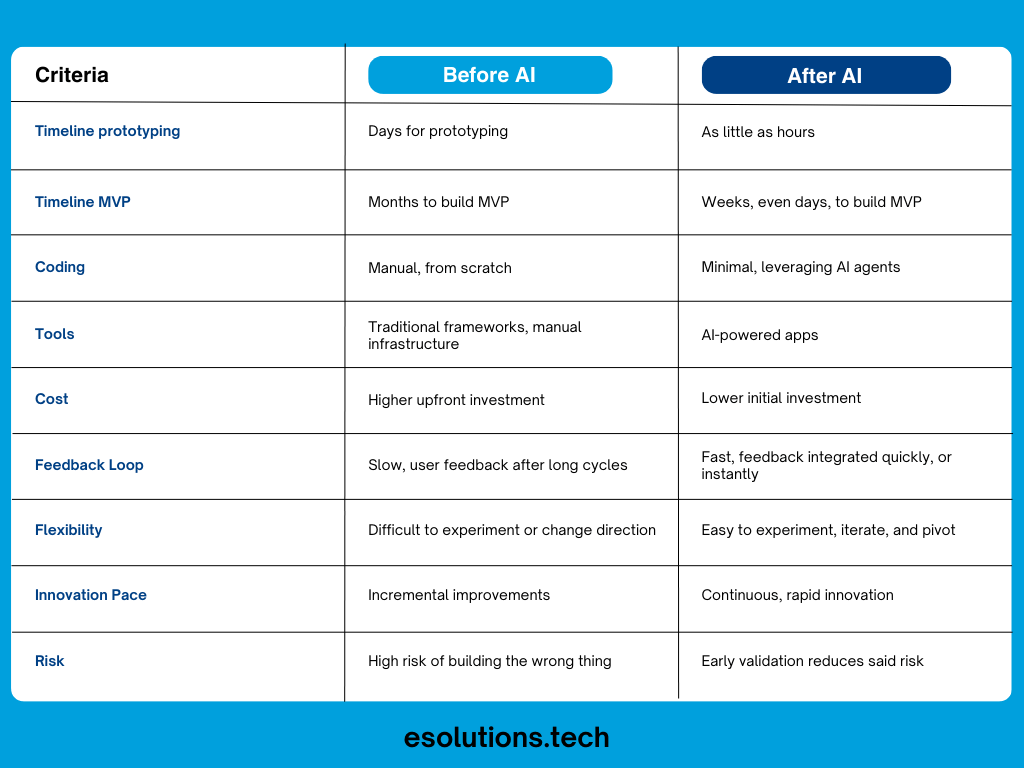
Prototyping in tech refers to the process of moving from an idea to a testing version of a software application; in short, creating prototypes of software applications. This used to take from weeks to months, since the process involved several steps, from deciding on the features, the UI/UX, and which programming languages to use, among others.
However, Artificial Intelligence has completely changed the game: what used to take months, now takes weeks and what used to take days, now takes hours. Today, a team of just three roles can deliver powerful prototypes, and MVPs, at unprecedented speed.
Creating software with the help of AI agents allows you to have a running prototype in as little as hours - that is what our experience showed us so far. AI allows us to:
AI-powered tools are easy-to-use AI models and services that help with rapid prototyping. However, you need a well-experienced AI engineer to work with them.
Once the prototype is ready, you can already start working on a first MVP.
Role: Envisions the solutions, gathers requirements and models the business flows
Responsibilities: Defining the problem, setting priorities, validating the MVP
How AI empowers them: Faster feedback loops, real-time validation, super fast requirements generation. The Technical Analyst with the latest AI skills will not only build up the requirements fast, but also come up with the business flows definitions and improvements and suggestions for all possible scenarios. The client no longer needs to write the requirements, only to choose from the list which one to implement. And all this in a couple of hours.
Role: The technical brain, integrating and customizing the application near real-time
Responsibilities: Developing the code using AI specialized tools
How AI tools have changed the job: Less manual coding, more focus on orchestration and creativity. With the requirements ready he will have the application developed in no time. He will show you the first screen within the first hour. Due to this high development speed, working closely is a must.
With a small but powerful team, alignment and quick feedback are a must. We suggest short daily feedback sessions; as the project starts to shape up into an MVP, the team will come up with more ideas of improvements.
If you wish to learn how the role of the Technical Analyst / Technical Product Owner is changing in the AI era, take a look at our other article.
By employing a partner with extensive experience in creating prototypes rapidly, you can:
Here is a breakdown of why AI helps in this endeavour:

Before AI, prototyping was slow, resource-heavy, and cost-intensive. After AI, it’s fast, lean, and focused on rapid learning and value creation. If you have ideas on how to improve your products or develop a new service to get your business further, we are here to help you prototype it - and fast.
 Corina Staicu is the Chief Product Officer at eSolutions, where she leads the strategy for B2B digital products. In addition, she is a key member of the consulting experts team, conducting technical audits for companies in various industries. With over 17 years of experience in IT projects and service operations, Corina is an ITIL Expert and Project Management Professional, specializing in business analysis for IT systems, service operations, and project management.
Corina Staicu is the Chief Product Officer at eSolutions, where she leads the strategy for B2B digital products. In addition, she is a key member of the consulting experts team, conducting technical audits for companies in various industries. With over 17 years of experience in IT projects and service operations, Corina is an ITIL Expert and Project Management Professional, specializing in business analysis for IT systems, service operations, and project management.